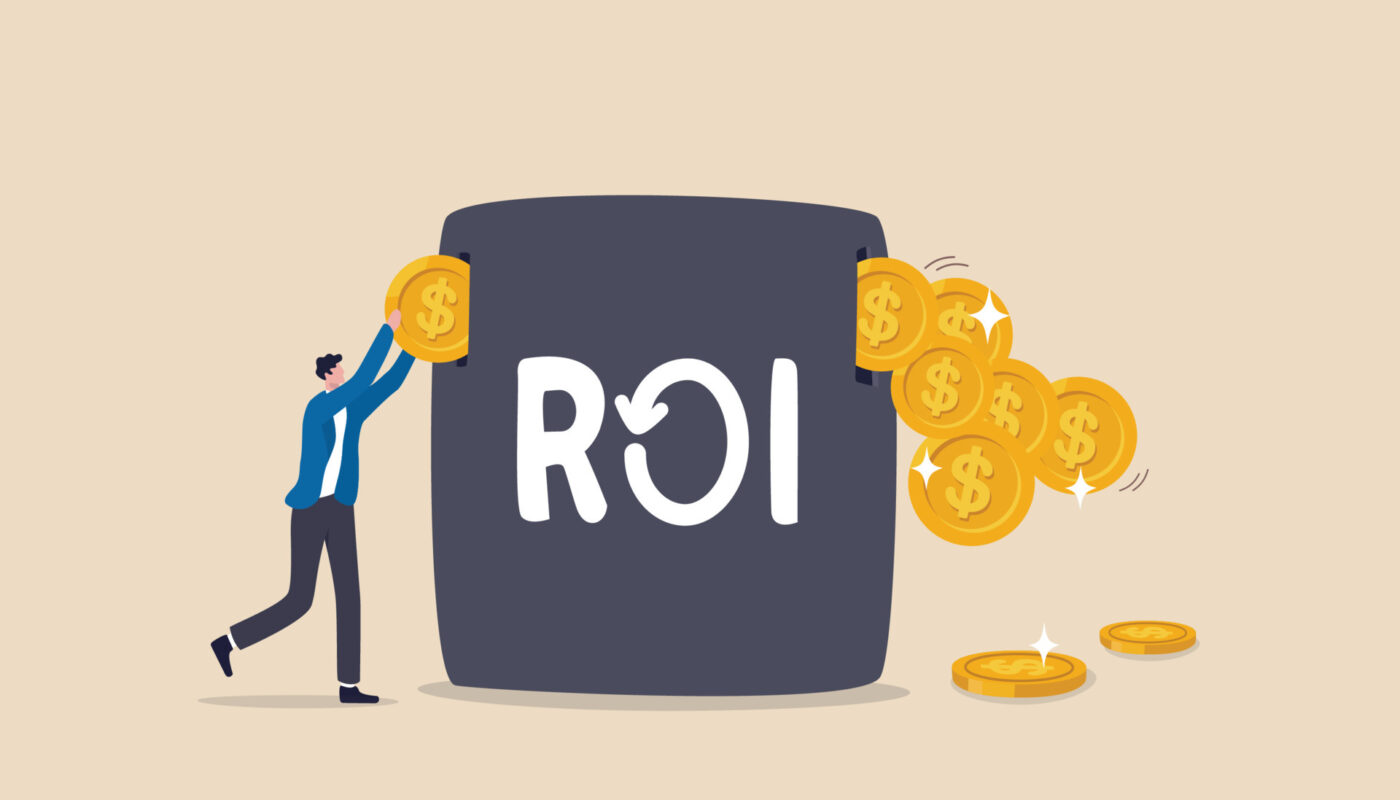Page Contents
Defining Return on Investment (ROI)
Return on Investment (ROI) is one of the most important and commonly used metrics to measure the success of an investment or project. It is a simple calculation that allows investors to gauge whether their investments are generating profitable returns or not.
Consider the tips to Maximise your ROI. ROI is calculated by taking the total amount of money earned from an investment and dividing it by the initial cost of the investment. The resulting number is then expressed as a percentage, with higher numbers representing more profitable investments. For example, if you invest $100 into a stock and make $20 in profit, your ROI would be 20 percent ($20 divided by $100).
When calculating ROI, it’s important to factor in all costs associated with making an investment — such as taxes, fees, commissions, etc. — as these can significantly reduce overall returns on an investment. Additionally, investors must also consider opportunity costs, which refer to potential losses due to not investing in another asset class or strategy that may have yielded higher returns than what was initially invested in.
ROI can be used for any type of investment ranging from stocks and bonds to real estate property purchases and business ventures. It’s also helpful for measuring success over time: Investors can compare historical ROIs from different investments.
Factors Affecting ROI
Return on investment (ROI) is a measure of the amount of profit or loss generated from an investment. It is typically expressed as a percentage and provides investors with an assessment of how well their money has been used. While ROI can be calculated for all types of investments, it is especially important for long-term investments such as stocks, real estate and retirement accounts. Understanding the factors that affect ROI can help investors make better decisions about where to invest their money.
The most obvious factor affecting ROI is the rate of return achieved on an investment. This rate will vary depending on the type of asset being invested in, with stocks generally offering higher returns than bonds or cash deposits. The risk associated with each type of asset also affects the potential return – higher risk assets like stocks usually offer greater rewards but come with greater potential losses too.
Calculating ROI

Calculating a return on investment (ROI) is an important part of any business decision. ROI is a measure of the profitability of an investment, and it is essential for determining whether investing in a particular project or venture will be profitable or not. Calculating ROI involves several different steps and can be complex, but understanding how to do it correctly can help you make smart decisions about where to invest your money.
The first step in calculating ROI is to determine the initial investment amount. This includes both the cost of purchasing or constructing the asset, as well as any associated costs such as installation fees and taxes. Once this amount has been determined, you must then calculate the net income from that particular asset over time. This includes any revenue generated from its use, minus expenses related to its upkeep and operation.
After determining your net income, divide it by your total initial investment amount to get your ROI percentage. For instance, if you invested $50,000 into an asset and earned $60,000 over two years through its use then your calculation would look like this: $60k / $50k = 1.2 which equals 120%, or a 20% return on investment (ROI).
Analyzing and Interpreting Results

Analyzing and interpreting results are essential skills for any researcher. Whether you’re collecting data from surveys, experiments, or interviews, you need to be able to make sense of the information so that it can be used for decision-making purposes. Here we discuss some tips for analyzing and interpreting your results accurately and effectively.
Start by organizing your data into categories or groups that are relevant to your research question. This will make it easier to identify patterns in the information and draw meaningful conclusions from it. You may also want to use appropriate statistical tools such as charts, graphs, tables or spreadsheets if the data is quantitative in nature.
Once you have organized your data into manageable chunks, begin looking for patterns in each category or group of information collected. These patterns can help you draw conclusions about how different factors affect one another and allow you to form hypotheses about why certain things occur as they do. If possible, compare the results with existing studies on similar topics so that you can verify their accuracy against proven research methods.
Conclusion
Calculating your ROI is an important factor when considering any investment, as it helps you to understand if the potential return on your investment is worth the risk. It’s important to remember that many factors can influence your ROI, such as market conditions and the type of investment you make. By taking the time to calculate and understand your ROI, you’ll be in a better position to make informed decisions about investing in the future.






